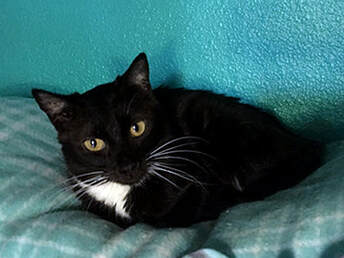
Whether you’re familiar or unfamiliar with this condition, simply put, feline stomatitis is a severe and painful inflammation of a cat’s mouth and gums. Affecting cats of any age and breed, it usually causes ulcers that can involve a cat’s lips, tongue, gums and the back of her throat.
While there’s no one cause of feline stomatitis, dental disease -- especially periodontal disease -- is very often the culprit. Why? Periodontal disease occurs when bacteria, or plaque, accumulates on and around a cat’s teeth, resulting in the inflammation of her gums and the structures that support her teeth.
Many times, stomatitis results from a cat’s abnormal response to the bacteria in her mouth, causing her immune system to literally attack its own oral tissues. Other conditions associated with stomatitis include such viruses as feline leukemia virus (FeLV), feline immunodeficiency virus (FIV), calicivirus and bartonellosis.
Since stomatitis is so painful, sometimes a cat suffering from this condition may be in too much pain to even open her mouth to eat. Or she may try to eat but scream out and drop her food the instant it touches her mouth. Other signs of stomatitis may include drooling (sometimes with blood), unkempt coat (when grooming herself is too painful), bad breath, weight loss and pawing at her face or mouth.
Examining the mouth of a cat with stomatitis can be extremely difficult if she refuses to open her mouth, and your vet may recommend she be sedated to conduct a thorough examination. A dental exam and x-rays can help determine the extent of any periodontal disease, and while the results of basic blood tests -- a complete blood cell count (CBC) and chemistry panel – may register as normal, ensure that your vet runs specific tests for FeLV, FIV and bartonellosis.
Treatment usually begins with medication to control the pain and inflammation of the condition, while antibiotics are also often administered. Many cats may even be willing to attempt eating soft food, and if yours is one of those, puree wet canned food for her until her mouth heals.
Although stomatitis is difficult to cure completely and treatment is, in most cases, long-term (the administration of anti-inflammatory medications and antibiotics intermittently), your vet will, in all likelihood recommend managing her dental disease by starting with a complete dental cleaning. Many cats do well once their molar and premolar teeth are removed. Because tooth surfaces provide areas for bacteria to attach themselves, removing these teeth can help minimize that bacterial growth. Brushing your cat’s teeth on a regular basis will also help reduce the accumulation of plaque and its associated inflammation of her gums.
If all else fails, however, removing the rest of your cat’s teeth may be the only option. But fret not, cats tend to do very well without their teeth.










 RSS Feed
RSS Feed